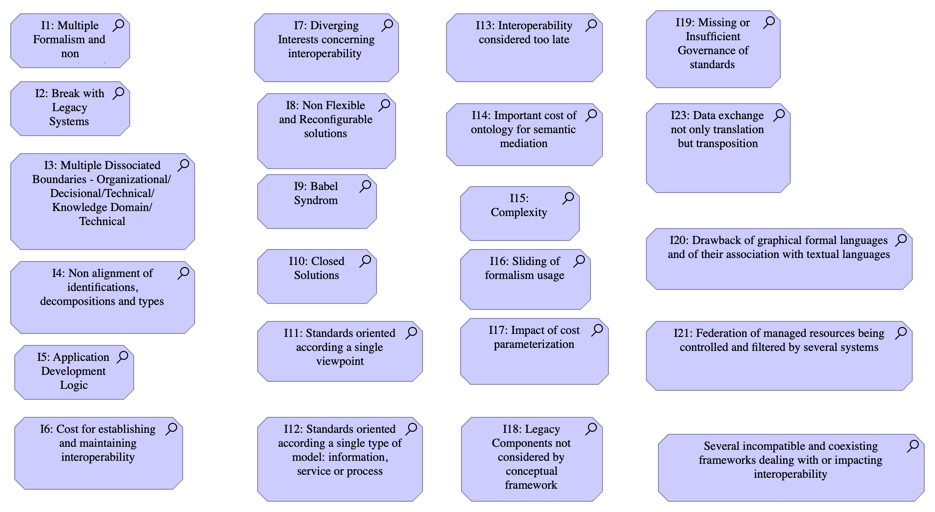| I1: Multiple Formalism and non preservation of the semantic |
|
| I2: Break with Legacy Systems |
|
| I3: Multiple Dissociated Boundaries - Organizational/Decisional/Technical/Knowledge Domain/Technical |
|
| I4: Non alignment of identifications, decompositions and types |
|
| I5: Application Development Logic |
|
| I6: Cost for establishing and maintaining interoperability |
|
| I7: Diverging Interests concerning interoperability |
|
| I8: Non Flexible and Reconfigurable solutions |
|
| I9: Babel Syndrom |
|
| I10: Closed Solutions |
|
| I11: Standards oriented according a single viewpoint |
|
| I12: Standards oriented according a single type of model: information, service or process |
|
| I13: Interoperability considered too late |
|
| I14: Important cost of ontology for semantic mediation |
|
| I15: Complexity |
|
| I16: Sliding of formalism usage |
|
| I17: Impact of cost parameterization |
|
| I18: Legacy Components not considered by conceptual framework |
|
| I19: Missing or Insufficient Governance of standards |
|
| I20: Drawback of graphical formal languages and of their association with textual languages |
|
| I21: Federation of managed resources being controlled and filtered by several systems |
|
| Several incompatible and coexisting frameworks dealing with or impacting interoperability |
|
| I23: Data exchange not only translation but transposition |
|

